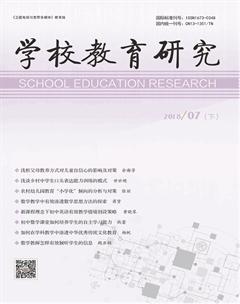Book 4 Unit 4 Body Language Reading: Facial Expressions 教学设计
庄静
教学设计理念:
基于《普通高中英语新课标(2017年版)》的总目标,普通高中英语课程的具体目标是培养和发展学生在接受高中英语教育后具备语言能力,文化意识,思维品质,学习能力等学科核心素养。本课在设计时,重在使学生理解书面语篇所表达的意义,识别其恰当表意所采用的手段。同时使学生获得文化知识,理解文化内涵,比较文化异同。本课在设计时参考了新课标对理解性和表达性技能在选择性必修阶段的以下要求:
1.区分、分析和概括语篇中的主要观点和事实;
2.根据语篇标题预测语篇的体裁和结构;
3.通过预测和设问理解语篇的意义;
4.批判性地审视语篇涉及的文化现象;
5.以口头或书面形式传递信息、论证观点、表达情感;
教学目标1:
Get the general idea about influential factors of facial expressions.
活动形式及步骤:
1. Students read the passage silently.
2. Students skim quickly and find key sentences and take notes.
3. Students answer question about the general idea of the whole passage and fill blanks.
活动意图:
明确阅读任务,总结归纳文章主旨大意。
活動层次:
感知注意;提取概括学习效果评价:学生能够通过第一遍阅读对文章有一个宏观的理解; 并且能够初步把握说明文的结构并学会定位主旨有关的关键信息,并最终总结出全文主旨大意。
教学目标2:
Find out detailed information and examples about facial expressions with reading skills.
活动形式及步骤:
1.Students read the passage again and answer three questions.
Question:
How many nationalities are mentioned in the full text? what are they?
How many groups of comparisons are given and what are they?
What aspects do they compare?
2. Students find out all aspects of comparisons between those countries and fill blanks.
活动意图:
从语篇中提取主要信息,抓住语篇中的关键概念和关键细节。
活动层次:
记忆检索;学习效果评价:学生能够通过再次阅读文章,对文章进行深入理解,对比得出四个不同国家的面部表情的文化特征,并提炼细节信息进行填空。
教学目标3:
State the feature of facial expression in different countries.
活动形式及步骤
Students generalize features of facial expressions of different countries by using words of their own or from the passage.
活动意图:
在熟悉的语境中,较为熟练地使用已有英语语言知识,进行概括性表达。
活动层次:
描述阐释; 分析判断。
学习效果评价:
学生用自己的或文章中的语言表达概括不同国家的面部表情特征及文化体现。
教学目标4:
Express opinions about some critical and opening topics.
活动形式及步骤:
1.Students discuss in groups on two topics from the text.
Topic:
“Yet many Americans smile freely at strangers in public places( although this is less common in big cities)”why would the author say that?
“In Southeast Asian cultures, a smile is frequently used to cover emotional pain or embarrassment.” Do you agree or disagree? why? How about Asian culture?
活动意图:
在熟悉的语境中,较为熟练地使用已有英语语言知识,进行概括性表达。
活动层次:
描述阐释; 整合运用。
学习效果评价:
学生能学会通过肢体语言和面部表情能注意到一些社会问题,并进行口语表达练习。

